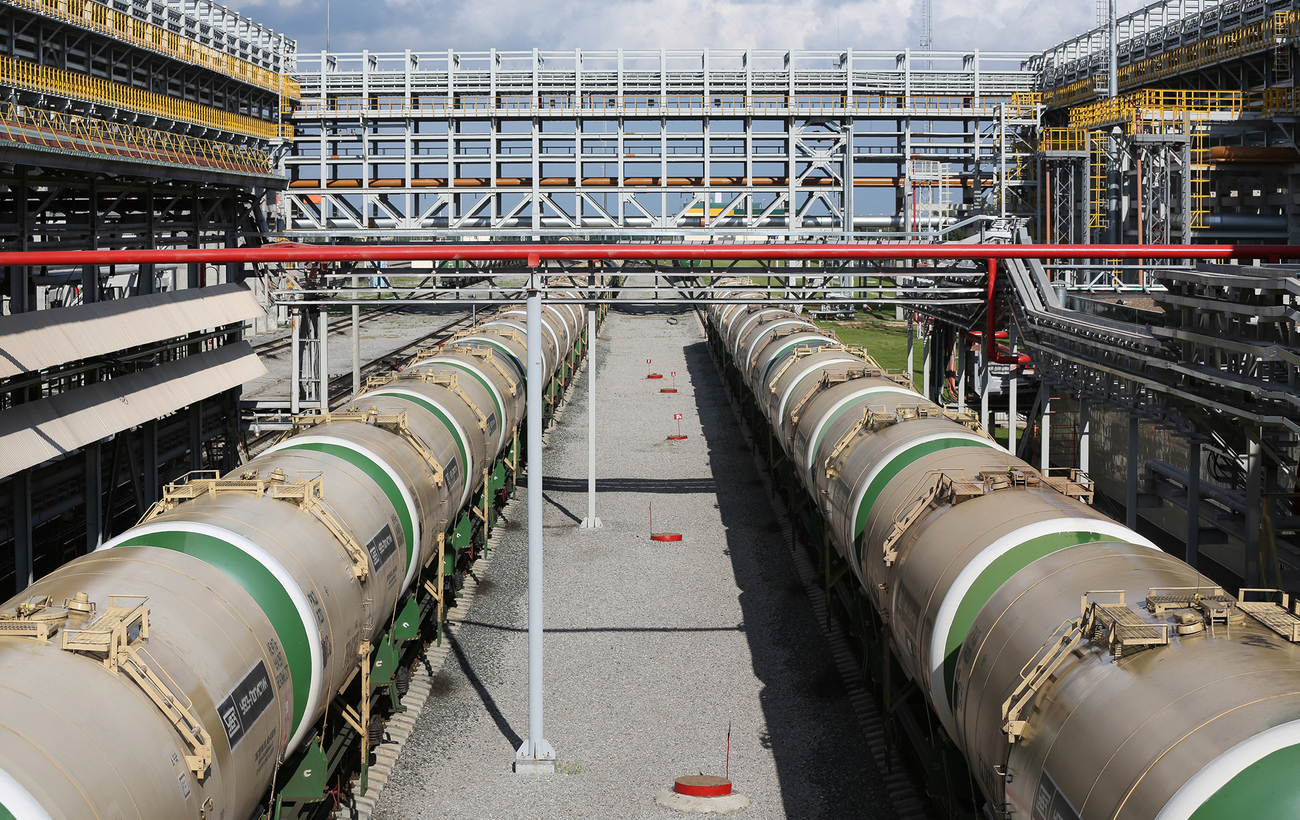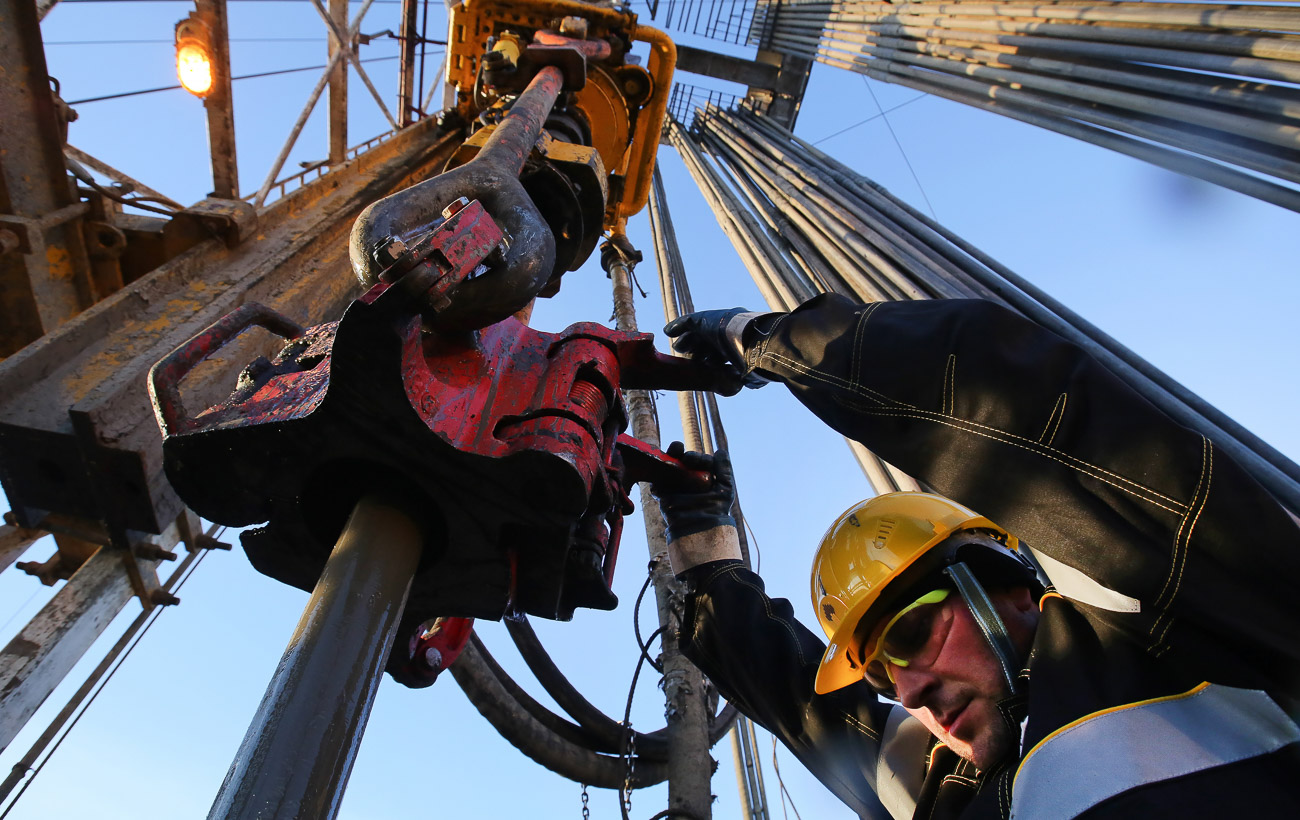How much Putin pays for the war in Ukraine as the West adds pressure on Russia's economy
 Russian oil production (photo: Getty Images)
Russian oil production (photo: Getty Images)
The Russian economy has been financing a full-scale war against Ukraine for three years. Military spending has spun up the inflation flywheel, drained labor resources, and taken away most of the reserves that were accumulated in peacetime. Read below how the war is undermining the economy of the aggressor country, what problems Moscow can no longer ignore, and whether Russia has a margin of firmness.
Contents
Stagflation scenario
For Russia, three years of war means three years of living under the harsh sanctions of the West. Despite Russia's efforts to circumvent the sanctions pressure, the latter is taking its toll and, along with high defense spending, is gradually undermining the aggressor country's economy.
According to the Ministry of Finance of Russia, spending on the entire state security and defense sector (army, Ministry of Internal Affairs, special services, etc.) from pre-war 2021 to 2025 (inclusive) almost tripled - from 5.9 to 16.9 trillion rubles. In 2025, this expenditure item is the largest in the structure of the federal budget - 41%, which is a record figure since 1991. At the same time, the 2025 budget significantly reduced the share of social spending, which is a pillar of popular support for the Putin regime.
The increase in war spending is not only caused by the production of military equipment and weapons but also by high payments to the “participants of the Joint Forces Operation.” The military receives 400 thousand rubles as a one-time payment for joining the army, and they are also paid a salary of at least 195 thousand rubles per month. Additional payments are provided by the regions of Russia. In case of a light injury, a Russian soldier can receive 100 thousand rubles, medium - 1 million rubles, and severe - 3 million rubles, and after the disability is confirmed, he is additionally paid 1 million rubles.
These amounts of payments, multiplied by the official number of the army (2.4 million people, of which 1.5 million are military personnel), make it clear that the maintenance of the military contingent has become an expensive pleasure for the Russian budget. By increasing payments, the Russian government is trying to attract as many people as possible to the army. It puts a money amount in the hands of the population that far exceeds the amount of goods and services in the civilian sector of the economy, which inevitably leads to inflation. According to the Bank of Russia, the official inflation rate began to rise in April 2023, and by December 2024, it increased from 2.3% to 8.9%.
“The key challenge for them now is inflation,” Serhii Fursa, deputy director of securities trading at Dragon Capital, told RBC-Ukraine.
The non-military sector of the Russian economy cannot produce enough goods to meet demand and absorb the significant amount of money that is being pumped into the economy. This is happening amid the shortage of labor resources that were taken away for the war. Because of mobilization, some people left the country in 2022. Sanctions are also having an impact, and as a result, a large number of Western companies in Russia have closed their offices and left the country.
A large flow of money is entering the economy, which drives up inflation, but at the same time, domestic production is falling. Economists call this scenario stagflation, which is a combination of stagnation (falling production) and inflation. This term has already been cautiously used in public speeches by the governor of the Russian central bank, Elvira Nabiullina, and the CEO of the state-owned Rostec corporation, which produces a wide range of military equipment, Sergey Chemezov.
In response to rising prices, the Central Bank of Russia began to tighten monetary policy and raise its key policy rate. From July 2023 to January 2025 inclusive, the rate rose from 7.5% to 21%. The rate increase was supposed to curb price growth, but it did not.
“So far, they (the actions of the Russian central bank - ed.) have not worked. The problem is that they cannot achieve results because inflation is not driven by a normal economy, but by the economy of war, meaning that the central bank does not affect military spending. When it “tightens the screws,” it affects the normal economy, there is less lending, which partially affects inflation, but does not affect the entire economy, because the war expenses were financed before, and they are still being financed. The central bank has a limited ability to influence inflationary processes and the amount of money in the economy,” Fursa explained to RBC-Ukraine.
Political problems have been added to the purely economic ones. In December 2024, options for an even greater increase in the key policy rate were considered, but the Bank of Russia's policy faced large-scale criticism from the industrial bloc - heads of military-industrial complex enterprises, metallurgy, and some Russian oligarchs. The reason is that a rise in the rate leads to an increase in the cost of borrowed capital, i.e. interest rates on loans attracted by industry. The Central Bank decided not to increase the degree of tension and at a meeting in late December kept the key rate at 21%.
Resources for the war economy
The Russian budget for 2025 has been drawn up with a deficit of 1.2 trillion rubles (revenues - 40.3 trillion rubles, expenses - 41.5 trillion rubles). This is not a new figure for Russia; in 2022-2024, the federal budget deficit exceeded RUB 3 trillion annually. The aggressor country has the National Welfare Fund, tax revenues, and ruble printing to cover the expenditures and the budget deficit.
Since the beginning of the full-scale war against Ukraine, Russia has spent a large portion of the National Welfare Fund, which was accumulated from oil and gas revenues during 2010-2022. According to the Russian Ministry of Finance, the liquid part of this fund (which can be converted into real money), as of December 1, 2024, amounted to $53.8 billion, while at the beginning of the war, it was about $150 billion.
“There is a lot in this fund that you cannot sell and convert into money. In particular, in the illiquid part, there are “Yanukovych Eurobonds” (Ukrainian government Eurobonds Russia bought in 2013 - ed.) These three billion dollars that Ukraine allegedly owes are worthless pieces of paper, and there are many other things. That's why they usually keep an eye on the liquid part, which is gold and yuan. At the rate it is being spent, it will be enough only until the end of 2025, and maybe it will run out earlier,” Fursa commented.
In 2025, the Russian government significantly raised a number of taxes, for example, the income tax increased from 20% to 25%. Amid rising key policy rates, interest on deposits has also increased, motivating people to deposit trillions of rubles in banks. According to the Russian Deposit Insurance Agency, as of September 2024, the total volume of insured deposits of individuals and legal entities amounted to 70 trillion rubles. Some of these funds are invested in loans, and some are free liquidity in the banking system.
“This free liquidity can be invested in bonds of the Russian Ministry of Finance. At the end of 2024, they already used the emission mechanism: banks borrowed from the central bank, used this loan to buy government securities, and thus financed the government,” Fursa added.
In addition to purely domestic resources, the Russian economy, unfortunately, also has significant external resources. We are talking about energy exports and imports of goods for the production of weapons in the circumvention of sanctions. A recent Reuters investigation provided evidence of Russian companies importing chemicals for the production of explosives.
According to the Kyiv School of Economics think tank, in 2022-2024, Russia managed to keep its oil and oil products exports at a more or less constant level - 4-5 and 2.5-3 million barrels per day of oil and oil products, respectively. China, India, and Türkiye remain the main buyers of Russian oil, and supplies to these countries have replaced the lost exports to the EU, the US, and the UK.

Much Russian oil is shipped to refineries in China and India (photo: Getty Images)
Despite the more or less constant volume of hydrocarbon exports, Russia's revenue from their sale to the world market has decreased since the beginning of the war. According to the Kyiv School of Economics, in 2022, Russia exported $218 billion worth of oil and oil products, and in 2025 this figure is projected to be 24% lower, at $166 billion. As for gas export revenues, in 2022 they amounted to $131 billion, and in 2025 they may decrease threefold to $42.5 billion.
Most of the exports of crude oil and petroleum products from Russia are carried out using the shadow fleet, i.e. ships that are not insured by international insurance companies to circumvent sanctions and transport, for example, oil at a price above the established price cap ($60 per barrel).
“According to our estimates, in November 2024, 90% of crude oil from Russia was transported by the shadow fleet. In total, the shadow fleet transported 69% of Russian oil and oil products in November,” Yuliia Pavytska, Manager of the Sanctions Program at the KSE Institute, told RBC-Ukraine. The expert added that the shadow fleet is also being used to damage the EU's infrastructure, a recent example being the damage to cables at the bottom of the Baltic Sea.
Sanctions pressure
In November 2024, the Russian government adopted the budget for 2025-2027. This document retains the same significant defense spending for 2026 and 2027 as this year - 12.7 and 13 trillion rubles, respectively. The Ministry of Finance has explicitly stated the need to allocate funds “to ensure the tasks of the SMO”, showing that the regime is ready for a long war. Most likely, they will prioritize funding for the military-industrial complex, even with the growing problems in the economy.
That is why sanctions are essential. In an interview with RBC-Ukraine, Vladyslav Vlasiuk, the Presidential Commissioner for Sanctions Policy, said that as of the end of November 2024, almost one hundred oil tankers were under sanctions.
Already this year, on January 10, Joe Biden's administration unveiled a new (the largest since the beginning of the full-scale war) sanctions package against the Russian oil industry. According to Bloomberg, about 160 tankers were sanctioned, including shuttle tankers that transport oil from Russian production platforms in the Arctic and Pacific Oceans to nearby ports. These tankers are also used to transport oil to China. Moreover, Chinese companies themselves have been sanctioned, for example, the operator of one of the oil terminals, Shandong United Energy Pipeline Transportation Co. Ltd.
The sanctions list includes a number of trading companies that sell Russian oil, two Russian insurance companies (Ingosstrakh Insurance Company and AlfaStrakhovanie Group) that provide services to the Russian tanker fleet, and American companies that continue to provide services for oil production in Russia (including Schlumberger, which operates in Russia under the new name SLB). According to the Financial Times, on January 14, two members of the US Congress said that SLB should leave Russia to avoid being subject to a new package of sanctions. Sanctions were also imposed on oil companies such as Gazprom Neft and Surgutneftegaz. The British government joined the Biden administration in this step.

American oilfield service companies that continue to operate in Russia are under sanctions (photo: Getty Images)
As a result of the new sanctions,oil tanker freight rates have increased, reports Bloomberg. And India, one of the main buyers of Russian oil, intends to refuse the services of those tankers that are on the sanctions list. The media also reported that as of January 13, three tankers with 2 million barrels of Russian oil on board were forced to stay at sea off eastern China because they could not enter ports and unload. As early as the evening of January 13, according to Reuters, at least 65 Russian oil tankers anchored in different places off the coasts of Russia, China, and Singapore. So, the consequences of the latest sanctions are really serious.
“This is a long-awaited package. We have been saying for two years that we need to strengthen control over compliance with the price cap and fight the shadow fleet,” Volodymyr Dubrovskyi, senior economist at the Center for Social and Economic Research CASE Ukraine, told RBC-Ukraine. According to him, sanctions against specific tankers are a very effective tool, as it will be difficult and quite expensive for Russia to buy new vessels. The Europeans are already talking about the need to impose sanctions on tankers transporting Russian liquefied natural gas.
According to the expert, the next step should be a ban on the passage of tankers carrying Russian oil without proper insurance through the Danish straits that connect the Baltic and North Seas. Through this route, Russia exports about 60% of its oil to the world market. Sanctions against the transportation of Russian oil through the Baltic and North Seas are a more likely scenario than countering oil exports through the Turkish Bosporus and Dardanelles or ports in the Pacific Ocean.
“The Russian vertical of power is based on raw material rents, mostly rents from oil exports. Most oil exports are carried out by sea. If we want to create threats to the regime, this (expanding sanctions against the maritime transportation of crude oil - ed.) is the most effective way to add problems to the Russian economy,” Dubrovskyi said.
It appears that the Russian economy is well-resourced for 2025, but it will be difficult to maintain the same record military spending in the future. Signs of serious problems are accumulating: inflation, falling non-military production, etc. Western restrictions are still limiting the Kremlin regime's options, despite numerous workarounds. By continuing the war, Russia is driving its economy to a dead end, so the task of Ukraine's Western partners is to help the destructive processes in the aggressor country as much as possible.

